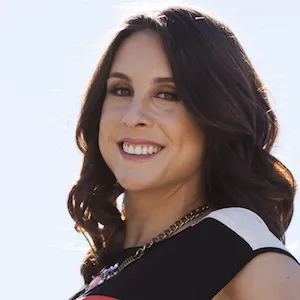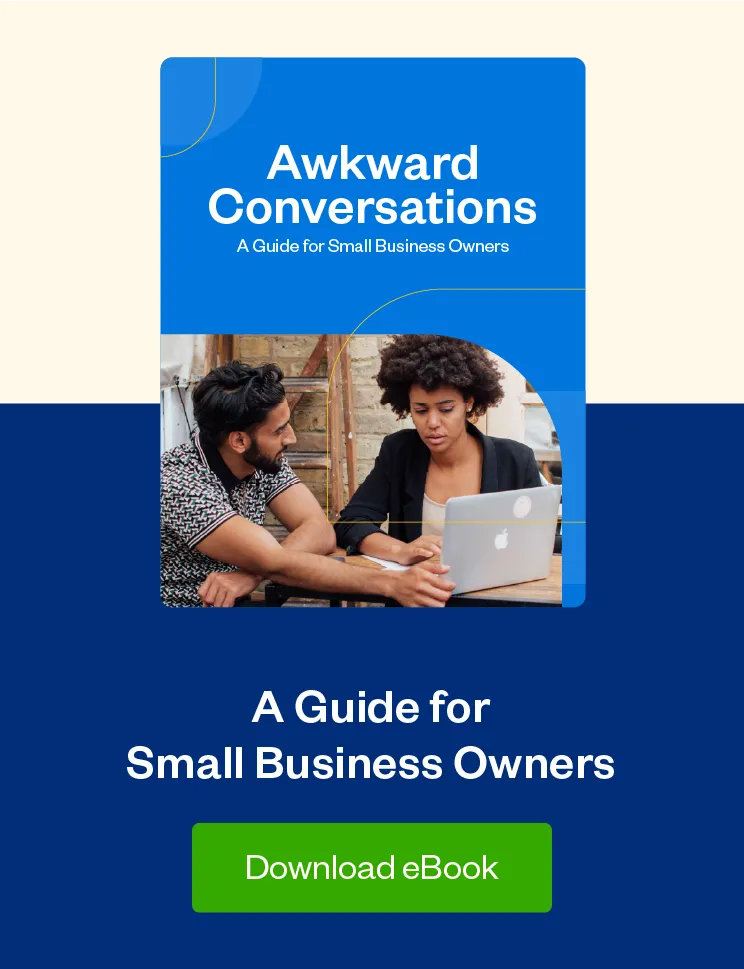Learn how to say no politely—so you can say yes to the clients and projects that matter.

For most people, saying no can be a real challenge. But it becomes even more of a challenge when you work for yourself. Learning how to say no politely is a critical skill to develop.
As a freelancer, consultant, or small business owner, it can be tempting to say “yes” to every client or project that comes your way. After all, who knows when the next job will come along? And, no matter what happens, it’ll be worth it in the end…right?
Wrong.
The truth is, there are plenty of reasons to say no to a client or a project. Maybe you already have too much on your plate. Maybe the project isn’t quite the right fit. Maybe the client is notoriously challenging to work with. Whatever the situation, you’re going to run into situations where it’s in your best interest to decline—and if you don’t master the art of saying no, it can lead to resentment, overwhelm, and burnout.
Table of Contents
Why It’s So Important to Learn How to Say No Politely to a Client
There are so many reasons why, as someone who works for themselves, you need to learn how to say no to clients.
When you say yes to every client, project, and opportunity that comes your way, your calendar is going to fill up, your to-do list is going to grow and before you know it, you’re going to be burning the candle at both ends.
Learning how to say no politely allows you to evaluate every opportunity and make a decision as to whether it’s:
- Something you can take on
- Something you’re qualified to take on, or
- Something you want to take on
This will allow you to spend more time doing work you actually enjoy (and work you’re good at!).
The point is when you learn how to say no politely to clients, projects, or work that isn’t a fit, you’re leaving room to say “yes” to opportunities that are a better match. And those opportunities will make working in your business feel more focused, fulfilling, and manageable.
Clearly, learning how to say no politely is important. But how, exactly, do you do that?
When a client makes a request—whether that’s taking on a new project, moving up a deadline, or sitting in on (yet another) meeting—take a breather. Instead of immediately responding (and likely saying yes), take a few hours to sit with it. Ask yourself:
- Is this something I really want to take on? (This is their priority. Is it yours?)
- Is this something I have the time/energy/bandwidth to take on?
- Why am I saying yes to this request?
Tip 1: Take Your Time
For many people, saying yes is a knee-jerk reaction. If this resonates with you, and you immediately say yes to every client request, the best way to learn how to say no is to take your time.
By not immediately jumping on every opportunity (and reactively saying yes), you give yourself the time and space to decide what opportunities are right for you—and to plan how you’re going to respond with a polite no, if necessary.
Tip 2: Put on the Kid Gloves
Setting boundaries and saying no to your clients is important. But so is maintaining positive relationships with those clients, which is why it’s so important to play nice. A little politeness goes a long way when you say no.
In a Men with Pens post, copywriter James Chartrand highlights key insights from William Ury’s book, The Power of a Positive No: How to Say No and Still Get to Yes, including useful phrases that could diffuse the situation (with politeness!) and help you get your client to feel better about your no. Some of those phrases include:
- “I’d love to, but I really have to… (insert action here)”
- “I’m already working on (insert task here) but I can (offer an alternative)…”
- “That would be great, but I’ve already committed to…”
- “My schedule is booked until (date)… how about after that?”
- “I really appreciate that you offered me this job but at the moment I’m all tied up with (insert project)
By buffering your no with some politeness (or, as we like to call it, “putting on the kid gloves”), you can make your no easier for your client to hear, which can go a long way in preserving your business relationship.
For more tips and templates for having some of these “awkward conversations” with clients, download our free eBook.
Tip 3: Make a No Sandwich
Again, when it comes to saying no, a little politeness can go a long way. And so can a little positivity.
Most clients will be more receptive to a decline if you soften the blow with a positive or two. So, if you need to say no, try sandwiching it between two yeses.
So, what might that look like in action?
- “Good news: I just looked at our analytics, and the blog posts are performing well!! Unfortunately, I won’t be able to push up the deadline for our next post, but I can definitely send a rough outline for you to look over on Monday.”
- “Thanks so much for inviting me to that meeting. It was really helpful! Unfortunately, I won’t be able to make it to next week’s sit-down, but I will definitely make sure to follow up with your assistant afterward to make sure I didn’t miss anything. He’s so on point!”
- “Thank you so much for thinking of me for this project! Unfortunately, I don’t have the bandwidth to take it on, but I’ll definitely let you know if that changes. I always enjoy working with you!”
Starting and ending with a yes will leave your client with an overall positive sentiment towards you and your business, even when you have to say no.
Tip 4: Offer Alternatives
Sometimes, the reason you’re saying no is more a matter of logistics than actually not wanting to work with a client or on a project. If you have to say no because your client’s parameters just won’t work for you, offering an alternative (that works for you, of course!) is a great way to transform that no into a yes.
So, for example, let’s say a client sends over a project that you’re excited to tackle, but their deadline is unrealistic. You could say something like, “This project sounds like a great fit, but my schedule is packed right now and I can’t finish it up this week. Would it work if we pushed the deadline back to the middle of the month?”
When you want to work on something but the details aren’t quite right, offering alternatives allows you to say no to what isn’t working for you—and to say yes on your own terms.
Tip 5: Explain Yourself, but Be Direct
When you have to say no to a client, part of being polite is explaining yourself. With a proper explanation, your client will understand the reason behind your no, which can make it easier for them to accept.
But there’s explaining—and then there’s overexplaining.
You don’t need to give a million reasons to justify saying no. Setting boundaries and saying no is a must for any successful business owner, and you shouldn’t feel the need to go overboard with explaining yourself or making excuses.
Explain to your client the reason you’re saying no and apologize that you can’t make it happen (whether “it” is moving up a deadline or tackling a new project), but do so in a direct and assertive way.
Tip 6: Say No to the Request, Not the Client
Some people take the word no harder than others. Make sure they understand that your “no” isn’t personal: Just because you’re saying no to the request, project, or opportunity doesn’t mean you’re saying no to them as a client.
For example, let’s say a client sends over a project you’re not interested in. Instead of just saying no, something like this can feel less harsh:
“Thank you so much for sending this project over! I don’t feel like this is quite in my wheelhouse, but definitely feel free to send over any other projects you might need help with. I always have such a great experience when we work together!”
A bit of sweet-talking and a reminder of how much you enjoy working with them can be all you need to soften the blow and make the no easier for them to hear and accept.
Still Struggling With Saying No?
If you are still feeling uncomfortable about saying no and still preserving your client relationships, here are some additional tactics that can help.
- Practice. Saying no is like anything else; practice makes perfect. Practicing saying no with friends and family you’re more comfortable with can make it easier to start setting boundaries in your business
- List your reasons. If you want to say no to a client but are struggling to actually tell them, make a list of reasons why you’re saying no (e.g., you don’t have enough time, you’re not excited about the project or you’re dedicating more time to your personal life). Before you send an email or make a phone call declining their offer, read your list to gather strength and remind yourself of why the opportunity isn’t the right fit for you
- Accept the discomfort. Remember, saying no is awkward for a lot of people. So, if you’re feeling uncomfortable with the entire process, that’s OK! Accept the discomfort and know that the more you say no, the easier (and more comfortable) it will be
Learning how to say no politely is a challenge for many business owners. But it’s a challenge worth overcoming! Learning to set boundaries and say no will not only help you avoid burnout but will also allow you to spend your time working with clients and projects you’re truly excited about.
This post was updated in August 2022

Written by Deanna deBara, Freelance Contributor
Posted on November 11, 2019











![Awkward Conversations: A Guide for Small Business Owners [Free eBook] cover image](https://prod-blog-k8s.freshenv.com/blog/wp-content/uploads/2020/11/Blog_Post_Image-226x150.png)
